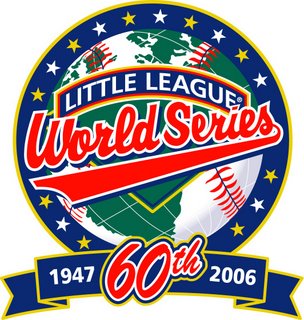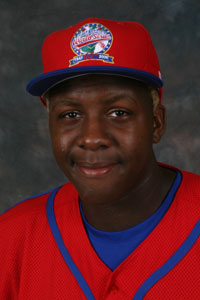

Here 's a couple of pictures of Beemer at the hospital following back surgery.
After a long weekend of emergency vet visits and an extended (3 nights) stay at the Animal Hospital, Beemer was able to return home Wednesday afternoon. Although this concludes a long ordeal (the surgery) and hopefully alleviates a lot of the pain he was in, it begins another long ordeal, the rehabilitation.
To start, Beemer has had an episode or two in the past of back pain, brought on I'm sure by his tendency to jump off the bed or the couch and occasionally land awkwardly. That and the stairs as well as the dachshund breeds unusual shape contributes to their predisposition to back injury.
Anyway, he was in pain beginning Saturday, but he went out for his morning walk as usual and just seemed a little stiff or tired. Later I went out to the store and when I came back he was waiting at the door for me, but when I came in he didn't follow close by under my feet as usual or run ahead and fetch a toy to play with. He just sat there. So I picked him up and put him on the coach to rest. He didn't seem like he was in pain due to the back as much as if his stomach was bothering him, and his abdomen was rumbling like crazy, so I thought he ate something that didn't agree with him.
When Ledra came back home Sunday, she realized his back feet were curled, which is a bad sign and an indicator of back trauma, he was losing function in his hind legs. We brought him to our local emergency vet, since it was the weekend. At that point they gave him some corticosteroids and pain meds and scheduled him for a followup later in the evening.
Unfortunately, the prognosis wasn't as good this time as the prior episodes. When we went back for that followup visit, the doctor recommended we take him to the hospital and schedule him for MRI/Surgery IMMEDIATELY. I was devastated, since the last time we went through this, the meds and rest worked and the pain ran it's course. The dilemma with dogs with disk problems that leads to loss of the use of the legs is that the longer you wait to decide upon surgery as a course of action, the less the chances of success. You have a small, 24-48 hour window to decide on a course of action. So, you're left with a tough decision, with no GUARANTEE of success, either way you go.
Much as I hated it, we took him at 1 AM to Buffalo Grove, about an hour away and had to leave him at least overnight to be evaluated. I know from my own experience, that there is no such thing as routine surgery. I wanted to him to avoid surgery at all costs. But his pain seemed to be getting worse. I wasn't sure if it was pain or fear at the time. And to be honest, I wasn't sure if the dog or I was in more pain or more afraid about what was happening.
We checked him in and left him for his tests, I know I was still hoping against hope they would find nothing major wrong and recommend rest and meds. Luckily, the expense of the surgery wouldn't be an obstacle (he said). The vet mentioned some people find that $3-4K for surgery and follow-up too much, some people say "well he's just a dog...." as if to infer that that's too much to spend to keep your dog healthy and alive. Personally, I never considered not doing everything I could to help him. I think he's earned it. I guess life would be easier if I could say, "Oh well, he's just a dog, put him out of his misery", but maybe in this case life wasn't meant to be easy.
Anyway, the next morning (Monday) the surgeon did a myelograph instead of the MRI and determined he blew out a disk that needed to be removed. They did that, he has the scars to prove it. He was resting well but not eating, the early tests were coming back that he did not have pain perception in his lower legs soon after surgery ( bad news, but not entirely unusual) . Everytime, Ledra would call with a update on Monday, my heart would jump into my throat, bracing for bad/worse news. I had too much free time to research all the possibilities on the Internet (the Internet can be both a blessing and a curse) so I was able to find out both the possibilities and the probabilities, the success stories and the horror stories, and you wonder which one is in store for your unique individual case.
Tuesday, we were able to visit him in the hospital and he was still out of it. He recognized us and whimpered a bit, but he was too tired to put up a real fuss. He has a huge separation anxiety issue (I think I do too) and this was the first time he spent a night without either Ledra and I with him. So I wasn't sure how he'd handle it. He was too out of it to kick up a fuss. Also, luckily for me, I had seen a picture of another dogs surgical scar on the 'Net so I was ready for Beemer's, otherwise it would have shocked and upset me greatly.
I guess me and hospitals don't get along too well. You know he old saying about a place being a nice place to visit, but you wouldn't want to live there? Well, hospitals to me aren't even nice places to visit. Plus, I knew we wouldn't be able to take him home. But I was glad to see him, glad he got past the first hurdle (surgery) and glad we were 24 hours closer to having him home.
On the way home, we stopped by Petsmart to pick him up a crate (for rest) and some other things for his rehab. Diapers and clothes to protect the bedding from accidents (recovering dogs often lose bowel control) . We got him a nice crate, doesn't look like a cage, more like a kiddy playpen, and some vitamins and supplements to aid his recovery.
Anyway, Wednesday couldn't some fast enough. When we got there we had some final paperwork to take care of and the payment, of course. They won't release the dog without that.
When he was walked out he let out a little yelp when he saw Ledra. He was more animated than the day before and I'm sure excited to be able to leave.
They had the rear-leg harness so he could walk on his front legs with his rear legs suspended off the ground (Picture a wheelbarrow). He won't have the use of his rear legs for some time. Could be 6-8 days or 6-8 weeks or not at all, depending on the severity of the injury, the skill of the surgeon and the rehabilitation.
The surgeons prognosis is GUARDED: Approx. 40% of dog's with Beemer's clinical signs will recover function of the hind legs. This recovery can take weeks to months and may not be complete.
We're hopeful she's being overly conservative. He gets the stitches out in about ten days and goes back to the surgeon for followup and evaluation in six weeks. His activity is very restricted until then. The good news was they did say that on Wednesday he had deep pain perception in his tail, which is a good, hopeful sign.
One of the sad things about this, he is such an active and vivacious dog that it's sad for me and I think frustrating for him not to be able to move around the way he's used to. I miss not seeing his wagging tail and bouncy nature. But, he's a tough, stubborn little dogie and if anyone can get past this, I think Beemer can.
In a way, I hope this is a test for me as well since I'm studying Physical Therapy. We're doing what we can now to get up to speed on the therapeutic modalities used by vets to rehab injured animals. As if either Ledra or myself needed another thing to become immersed in. Maybe we're being tested. I don't intend for us to fail though. This is for Beemer. It's too important.
Wish us luck and remember Beemer in your prayers, if you can.






